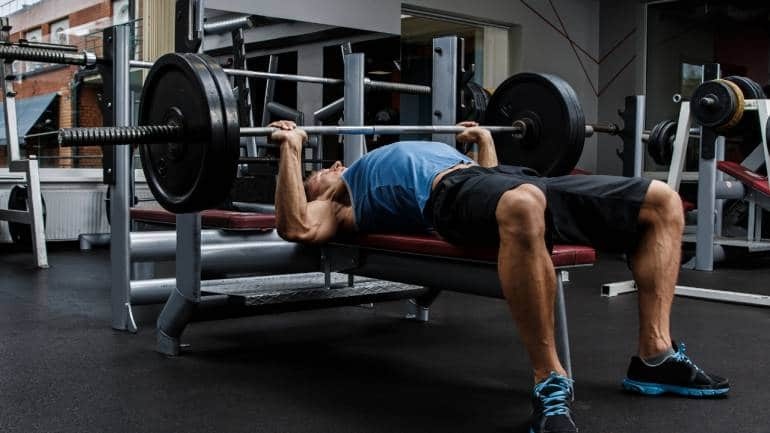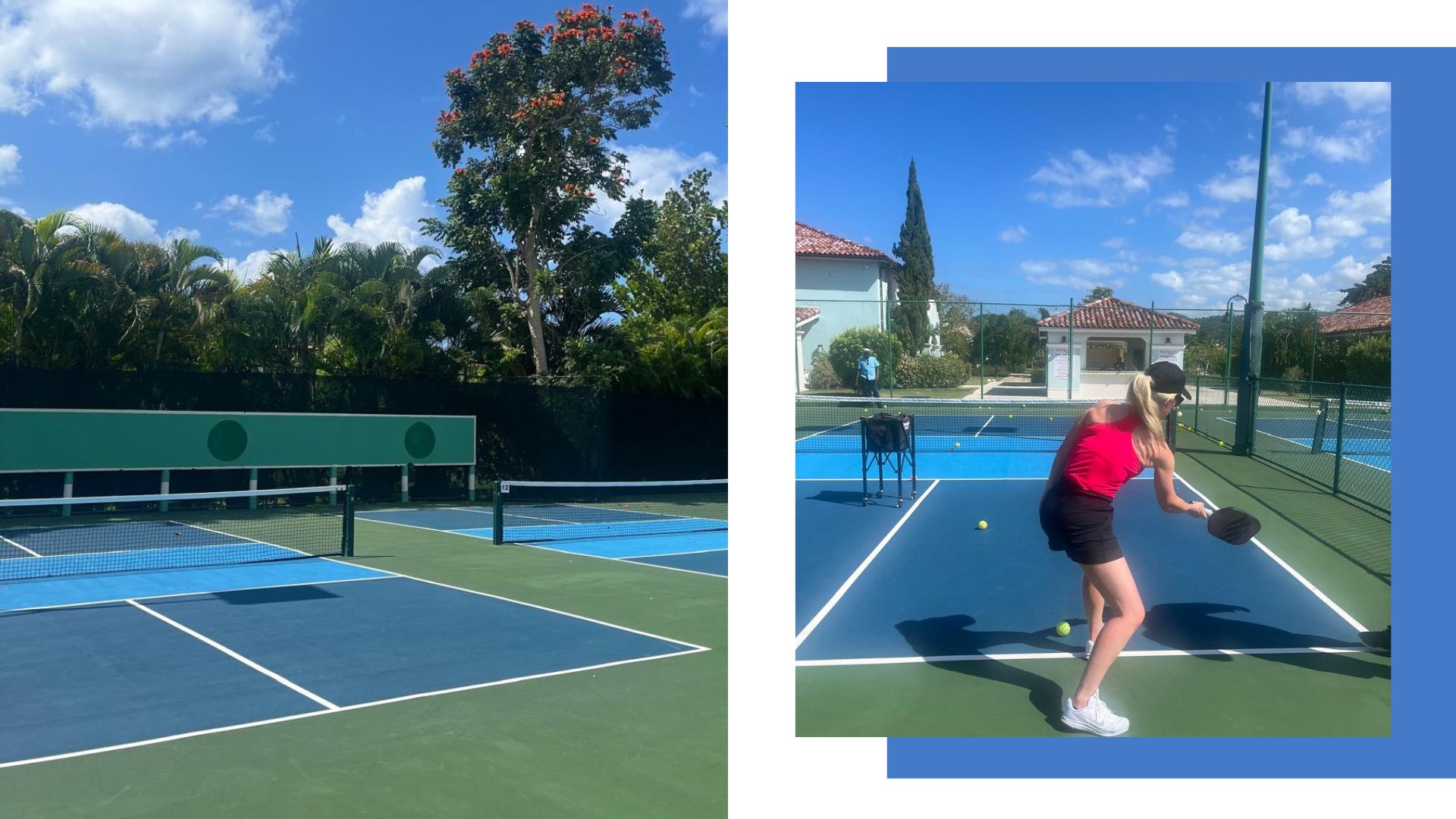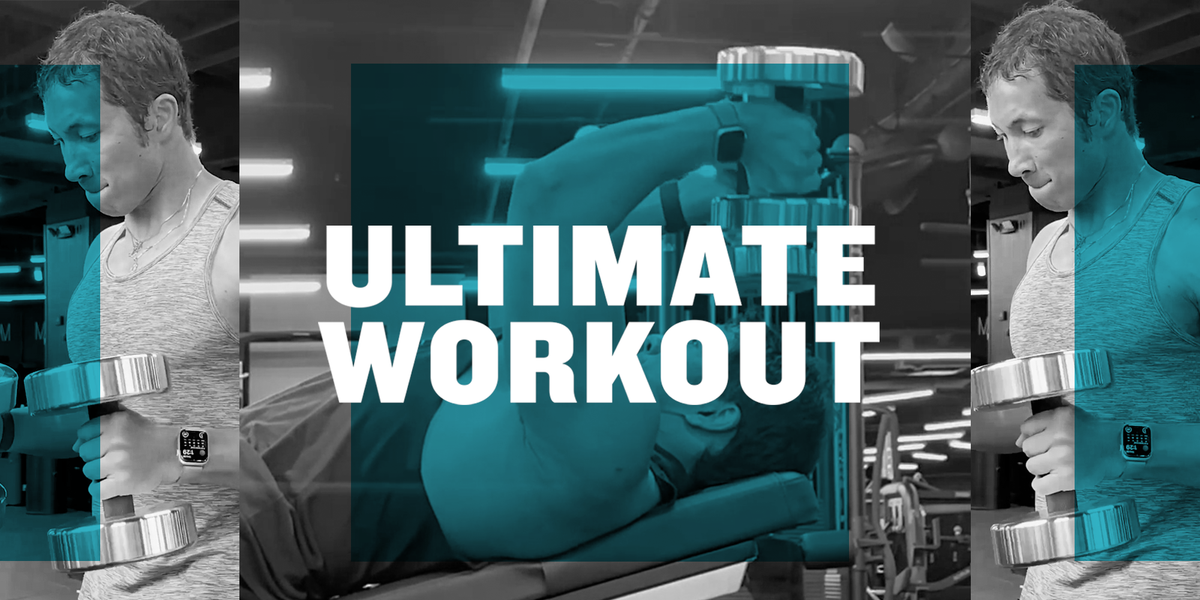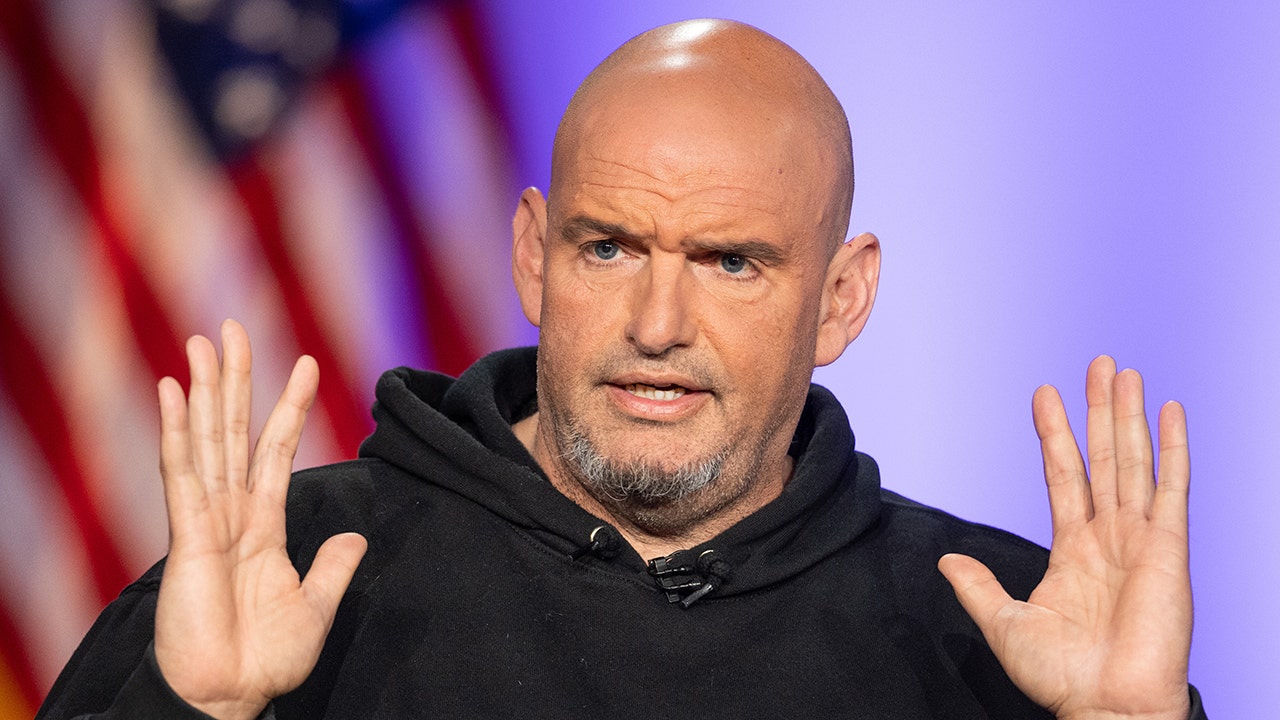What You Need to Do to Build Superhero Arms
Walk 8,000-10,000 Steps Per Day
AS YOU’RE LIVING an active lifestyle, you should kind of trip and fall your way to eight to 10 thousand steps per day,” says Samuel. “If not, just try to get a little bit of extra activity in.” Walking more is the most measurable way to increase your NEAT (non-exercise activity thermogenesis). That is, how many calories you burn when not exercising. Increasing your NEAT can help you burn hundreds of additional calories per day without contributing to your fatigue.
Eat to Gain Muscle
“We want to make sure we’re not in a calorie deficit for this program,” Samuel explains. “We want to be in a slight surplus because you’re going to need those calories to grow muscle on your biceps and triceps.” For more information on how to eat, check out our guide here.
Lift Heavy and Focus On the Eccentric
“What this program is about is owning your form and owning the eccentric portion [or lowering phase] of every single contraction on your arm exercises,” Samuel says. “If you’re rocking and cheating your way through your form, then you’re not going to get those good squeezes and long eccentrics movements that can help grow arm muscle.”
4 Key Arm Training Principles
Do Exercises With Multi-Joint Stimulus
“WHEN I’M BUILDING a general strength training program for you guys, I’m focusing on our big lifts,” Samuel says of exercises like rows, bench presses, and deadlifts. “We build our program around those multi-joint ideas because they’re good for calorie burn and they’re good for sending signals to our muscles to grow everything.”
The multi-joint movements (also called compound exercises) are, in this instance, programmed to help you preserve the muscle you already have so you can expend your energy growing your arms. Too many heavy lifts, he says, will leave you too physically and mentally fatigued to attack your arms with the intensity you need to make gains. For that reason, Samuel says you’ll pull back on these compound movements while on this specific program to make room for more arm exercises.
“What we still want to make sure to do is enough of those big lifts, so that we’re still sending signals to our larger muscle groups that we want to preserve the size we have,” Samuel says.
Split Workouts Into Push and Pull Motions
“I’ve had you do splits that were two upper days and two lower days, really crushing our legs and big lifts, but this split is a little different,” says Samuel, who is switching it up for this program.
This time around, you’ll stick with four training days: a push day, a pull day, a leg day, and an arm day. This set-up lets you accumulate more arm work into your week by pairing triceps with chest and biceps with back, in addition to a standalone arm workout. Your legs, chest, back, and shoulders will take a backseat during this program, with enough volume to maintain the muscle you already have in those areas.
Utilize Techniques to Fight Through Fatigue
Your sets and reps for multi-joint lifts like deadlifts and bench presses will be straightforward: three sets for anywhere from six to 12 reps. Push those sets but remember that the goal of this program is to size-up your arms.
With that in mind, Samuel includes a series of intensity techniques to help you lift more weight for more reps to eke out as much muscle-building stimulus as possible.
Direct Arm Work Three Times Per Week
As mentioned above, Samuel set up this workout split to include three arm training days, with your triceps and biceps each getting two sessions per week.
“You can train arms often if you train them smart because, overall, you are working lighter loads,” Samuel says. “We’re going to push through and make sure we get as much direct arm work as we can over the course of this program.”
Your Superhero Arm Workout Plan
Warmup
KEEP YOUR WARMUP quick to get you in and out of the gym in about an hour. Do a one-minute-long set of jumping jacks, planks, and reverse lunges, “something to get your heart rate moving,” as Samuel puts it. Not included in the workouts below are the one to two “feeler sets” that you should do for your heavier lifts. For example, if you can dumbbell press 80 pounds, it’s wise to do a set of, say, six reps with 40 pounds and then another set of four reps with 60 pounds before hitting your working sets.
How to Progress
Each week, you want to do more reps or more weight for pretty much every exercise, week to week. For example, say you do dumbbell skull crushers with 25 pounds for 10 reps during week 1. Next week, you’ll try for 11 reps, then 12 reps the week after, and so on. If you run this program for longer than four weeks, you’ll add five to 10 pounds to your lifts and repeat that weekly rep progression. If you make it to the top end of each prescribed rep range quickly, add more weight during next week’s session and try again.
Rest
A good general rule of thumb is to rest for 90 seconds to two minutes between sets of heavy compound movements, like the trap-bar deadlift and Bulgarian split squats, and 60 seconds between isolation movements.
DAY 1:
Back & Biceps
EZ-Bar Incline Row
SAMUEL SAYS: “I love starting with some sort of horizontal pull because it’s going to teach our shoulder blades to move correctly. Let’s say you have some sort of office job or you’re driving a lot, it’s going to offset that forward position and start to train our shoulder blades to come back.”
SETS AND REPS: 3 sets of 6 to 10 reps
HOW TO DO IT:
- Sit on an incline bench facing forward, so you can rest your chest against the pad.
- Use a supinated (or underhand) grip to grab the EZ bar. Engage your glutes and abs, then squeeze your shoulder blades to create tension.
- Pull the weight up to the bench. Think about driving the EZ bar straight through the bench as quickly and explosively as possible.
- Return the bar to the ground without allowing it to slam on the floor.
- Pause between each rep to reset your position.
Chinup
SAMUEL SAYS: “Whether this is five reps or 10 reps, [the chin-up gets] that vertical pull in, and, two, the chin-up by itself is a really good way to start warming up our biceps and triceps. I want you to do three sets of max reps, and that last set should be so hard you can barely pull yourself up.”
SETS AND REPS: 3 sets of max reps
HOW TO DO IT:
- Get into a good hanging position with an underhand grip, squeezing your shoulders, abs, and glutes to maintain tension.
- Drive your elbows into your hips to pull yourself up to the bar. Continue until your head is above the bar, pausing briefly at the top.
- Lower back down until your elbows are extended, maintaining control of the position and keeping tension.
Preacher Curl
SAMUEL SAYS: “If you have access to a preacher bench, we can do this with an EZ-bar, which is the ideal way to do this. After you hit your eight to 10 reps, then we’re going to try and bang out two to three more reps of [lengthened partials]. When we’re in that stretched-out position, it’s a great way to grow muscle.” If you don’t have an exercise-specific bench, you can swap in an adjustable bench and dumbbells.
SETS AND REPS: 3 sets of 8 to 10 reps (plus partial reps)
HOW TO DO IT:
- Begin by adjusting your seat to a position in which your chest is flush against the preacher pad with your armpits firmly wedged in, leaving little to no gap.
- Grab the EZ bar. Another benefit of using the machine preacher curl is that it allows you the option of either using a tight grip or light contact with relaxed palms. Either style works.
- Squeezing your shoulder blades and driving your lower body into the ground, begin curling the bar. Focus on rotating both pinkies toward the ceiling as you work toward a solid squeeze at the top of the rep.
- Lower back to start position. That’s one rep.
Hammer Curl Rack Run
SAMUEL SAYS: “I want you to choose a relatively heavy weight, something you can curl for four to six reps. After you hit those four to six reps, you’re going to pick up something five pounds later and do as many reps as you can. Repeat that process all the way down until you’re down to, like, 10 pounds. If you’re starting with 40-pound dumbbells, only do four drops. If you’re starting with 25-pound dumbbells, try to go all the way down to 10 pounds.”
SETS AND REPS: 2 sets; 2 minutes rest between sets
HOW TO DO IT:
- Stand with your feet hip-width apart, holding a pair of dumbbells in a neutral grip (palms facing each other). Squeeze your shoulder blades, abs, and glutes to create full-body tension.
- Curl the dumbbell up, moving only at the elbow joint. Keep your upper arms still and perpendicular to the floor. Squeeze your biceps at the top of the movement.
- Avoid shifting your elbow forward to keep your shoulders out of the movement.
- Lower the weight back down to the starting position under control.
DAY 2:
Chest & Triceps
Incline Dumbbell Press
SAMUEL SAYS: “This gives you a chance to go heavy, and we’re going to hit a large amount of our chest on this—our pec major, our upper pecs, our lower pecs.”
SETS AND REPS: 3 sets of 6 to 10 reps
HOW TO DO IT:
- Set a bench to a 30- to 45-degree incline and sit back with a dumbbell in each hand.
- Press the weights above your chest, keeping your wrists stacked over your elbows.
- Lower until your elbows are just below bench level, then drive the dumbbells back up.
Super-Set: Cable Fly + Paused Pushup
SAMUEL SAYS: “We’re going to lead with the cable fly, ideally with your back supported. As soon as you get done with those cable flys, you’re dropping into pause push-ups to technical failure. I want a two-second pause in the bottom position of those push-ups, and I don’t care how many reps you get.”
SETS AND REPS: 3 sets of 10 to 12 reps + 3 sets to failure; rest 90 seconds between sets
HOW TO DO THE CABLE FLY:
- Adjust the pulleys to chest height and attach D-handles.
- Grab the handles with your elbows slightly bent and palms facing forward. Walk them around so you’re in front of the bench, and then plant your back firmly against the pad.
- Press the handles forward until they meet in front of your chest
- Slowly open your arms, allowing a deep stretch in your chest. Let your arms travel as far back as is comfortable for your shoulders.
- Squeeze your chest and bring the handles back together.
HOW TO DO THE PUSHUP:
- Drop to the floor immediately after your last rep with your palms flat, stacked directly below your shoulders.
- Squeeze your shoulders, glutes, and core to create full-body tension. Your spine should form a straight line, keeping your eyes on the floor to maintain a neutral spine.
- Bend your elbows to descend to the floor, stopping with your chest just above the ground. Your elbows should be at a 45 degree angle relative to the torso.
- Press back up off the floor, raising up to the top position with your elbows fully extended.
Cable Overhead Extension
SAMUEL SAYS: “This is an exercise that’s going to give you a stretch at both the shoulder and elbow joint. The triceps has two main functions: it extends the elbow…it also brings our upper arm downward. We get to train both of those.”
SETS AND REPS: 3 sets of 6 to 8 reps + dropset to paused reps
HOW TO DO IT:
- Set up a bench to a 75-degree incline (likely the highest without the back support being fully vertical), and place it directly in front of a cable machine with a rope attachment. The cable should be anchored as close to the ground as possible.
- Lie with your back against the bench, abs and glutes tight, arms perpendicular to the ground, and have a friend hand you the rope attachment with your hands directly over your shoulders. Grasp both its ends.
- Slowly bend at the elbows, lowering the rope toward your shoulders. Bend your elbows as much as you possibly can, stretching your triceps. Don’t allow your elbows to flare as you do this.
- Then straighten your arms (don’t flare your elbows here either!), squeezing your triceps.
Dumbbell Skull Crusher
SAMUEL SAYS: “What you’re going to do is 25 reps, but I want you doing this with a weight you think you can hit reasonably for 10 to 12 reps. Bang out as many reps as you can with good form. Once your form fails, sit up, rest for five deep breaths, and then lie back down and do as many reps as you can until you get 25 reps.”
SETS AND REPS: 2 sets of 25 reps; rest 2 minutes between sets
HOW TO DO IT:
- Start by lying back on the bench. Don’t arch your back—drive your shoulder blades into the bench, squeeze your abs and glutes, and keep your feet flat on the floor.
- Press the weight straight up above your chest, holding the dumbbells in a neutral position (palms facing each other). Your upper arms should be just past 90 degrees, at a 91 or 92 degree angle. Keep your wrists strong and a tight grip on the weight.
- Lower the weights slowly down to an inch above your forehead, moving only at the elbows. Don’t allow your shoulders to shift forward; keep your upper arms still.
- Drive the weight back up (again moving only at the elbows), squeezing your triceps at the top.
DAY 3:
Legs
Trap Bar Deadlift
SAMUEL SAYS: “Point blank: in any routine, the trap-bar deadlift is critical because it’s going to ensure we’re moving a heavy weight. You don’t need to think about setting PRs [personal records] in this block, but you do want to train this move heavy because it’s your one chance in this program to move heavy weight.”
SETS AND REPS: 3 sets of 6 to 8 reps; rest 90 seconds between sets
HOW TO DO IT:
- Position yourself inside the trap bar, with your shins aligned with (or just in front of) the center of the bar.
- Push your butt back as far as possible, bend your knees, and reach down to grip the handles. Grip as tightly as possible.
- Keep your head neutral, keeping your gaze fixed on something in front of you. Squeeze your shoulder blades to create tension, and turn the pits of your elbows forward, facing out.
- Make sure your hips are lower than your shoulders, then prepare to initiate the lift.
- Push your feet through the floor to stand straight up, squeezing your glutes at the top.
- To finish the rep, push your butt back as far as you can, then bend your knees to set the weight down.
Dumbbell Bulgarian Split Squat
SAMUEL SAYS: “On these split squats, you don’t need to go crazy heavy, but I want you to challenge yourself. The last two reps should be relatively hard.”
SETS AND REPS: 3 sets of 8 to 10 reps
HOW TO DO IT:
- Start on the floor in front of the bench (or whatever stable platform you have on hand).
- Place one foot up onto the bench, then get into a position where your front foot is planted on the floor with a vertical shin (in relation to the ground). Your thigh should be parallel to the ground, forming a 90 degree angle at the knee.
- Grab the weights off the floor.
- Tighten your core and drive your ribcage in. Keep your neck neutral, looking straight ahead. Squeeze your shoulder blades to create tension.
- Stand up, hinging forward slightly to avoid overextending your back.
- Lower yourself down, working to keep your shin in that vertical position. Don’t allow your back knee to hit the ground; stop an inch from the floor if you can.
- Squeeze your glutes hard to keep your knee in the proper position, then press your front foot off the floor to drive up.
Leg Press
SAMUEL SAYS: “You can do one set of this or two sets of this. This is as much about getting a little bit more calorie burn, and, again, moving a little bit of heavy weight. It’s about another thing, too: When it comes to training arms, one of the things we need to understand is how to push through fatigue. The leg press is a really good and safe way to understand, from a mental standpoint, how to push our limits.”
SETS AND REPS: 1 to 2 sets of 15 to 20 reps; rest 90 seconds between sets
HOW TO DO IT:
- Get into a comfortable working position on the machine, with your shoulders and glutes squeezed and feet placed hip-width on the sled.
- Press through the sled with your feet, maintaining tension in your torso. Release the sled from the safety lock, then control the weight down.
- Watch your knees as you lower the weight, making sure you don’t allow them to cave in or track excessively outward.
- Lower down as far as you can, maintaining upper body tension with your back flush against the pad. Don’t allow your butt to raise off the seat; if you shift you’ve gone too deep.
- Press through the pad with both feet to raise the wait back up, extending your knees.
Kettlebell Swing
SAMUEL SAYS: “The kettlebell swing is doing one thing for us in this entire program. It’s the only time in this program where I’m asking you to be explosive, and just for longevity, we want to make sure we preserve a little bit of explosiveness in our program.”
SETS AND REPS: 3 rounds of 30 seconds on, 30 seconds off
HOW TO DO IT:
- Start standing with your feet slightly wider than hip-width apart, with the kettlebell on the ground in front of you.
- Push you butt back, then lean over to grip the bell’s handle. Hold on tightly.
- Squeeze your shoulder blades, then shift your arms to turn the pits of your elbows outward. Squeeze your abs to create tension. Keep your eyes on the floor to maintain a neutral spine.
- “Hike” the weight back between your legs, keeping your knees slightly bent. Keep your arms straight.
- Stand straight up, locking your knees, and aggressively squeeze your glutes to perform the swing. Keep your arms loose, like ropes connecting yourself to the kettlebell. Don’t aim for a certain point; allow the momentum to determine how high the bell goes.
- Allow the weight to fall back down, back through your legs.
DAY 4:
Arms
Barbell Curl
SAMUEL SAYS: “Why do we like barbell curls? Because we’re going to be able to go very heavy on barbell curls compared to our other biceps exercise, and two, it’s making sure it hits both functions of our biceps [elbow flexion and supination]. Choose a weight that you can do for 10 to 12 reps. Bang out as many reps as you can. Put the bar down and rest for five deep breaths, and then you’re going to pick it up again and keep doing that until you’ve done 20 total reps.”
SETS AND REPS: 3 sets of 20 reps (rest-pause style); rest for 90 seconds between sets
HOW TO DO IT:
- Stand with your feet about shoulder-width apart, holding the bar with a shoulder-width grip.
- Squeeze your glutes, abs, and shoulder blades. Keep your torso tight.
- Curl the weight up, moving only at the elbows.
- Squeeze your biceps at the top for a split second, then lower the weight back down.
Cable Curl
SAMUEL SAYS: “There is one other function that does not get hit with the barbell curl: shoulder flexion. Our biceps play a small role in pulling our shoulder forward, and that role gets challenged in the cable curl.”
SETS AND REPS: 3 sets of 6 to 8 reps (plus partial reps)
HOW TO DO IT:
- Grab the handle with one hand and take a step and a half away from the machine (or as far as you need to feel tension on the muscle).
- Squeeze the abs and glutes for a solid base.
- Create a slight angle with the elbow to where the cable feels like it’s pulling you back.
- Ensure that your hips and shoulders are facing square in front—don’t allow the tension from the cable to twist your torso backwards.
- Moving only at the elbow, curl your hand towards your shoulder.
- As you lower back down, make sure the cable doesn’t pull your shoulder from its position. Think about keeping the upper arm in line with your torso.
Hammer Curl
SAMUEL SAYS: “Choose a weight that lets you get anywhere from eight to 12 reps, and then we’re going to do as many reps as you can. Then we’re going to put the dumbbells down, rest for a three-count, and then pick the dumbbells up again and do as many reps as you can. Keep repeating this until you can no longer complete two to three reps.” (If you want to see this technique in action, check out our Building Blocks video in which Samuel performs Myo Reps.)
SETS AND REPS: 1 set of myo reps
HOW TO DO IT:
- Stand with your feet hip-width apart, holding a pair of dumbbells in a neutral grip (palms facing each other). Squeeze your shoulder blades, abs, and glutes to create full-body tension.
- Curl the dumbbell up, moving only at the elbow joint. Keep your upper arms still and perpendicular to the floor. Squeeze your biceps at the top of the movement.
- Avoid shifting your elbow forward to keep your shoulders out of the movement.
- Lower the weight back down to the starting position under control.
JM Press
SAMUEL SAYS: “The beauty of the JM press [which you can do with a barbell or dumbbells] is that it’s going to give us a really good loaded stretch on our triceps when we lower into the bottom position. Think about resting in that bottom position, feeling that stretch, and then pressing up.”
SETS AND REPS: 3 sets of 8 to 10 reps;
HOW TO DO IT:
- Start by lying back on the bench. Drive your shoulder blades into the bench, squeeze your abs and glutes, and keep your feet flat on the floor.
- Press the weight straight up above your chest, holding the dumbbells in a neutral position (palms facing each other). Your upper arms should be just past 90 degrees, at a 91 or 92 degree angle. Keep your wrists strong and a tight grip on the weights.
- Lower the points of your elbows down to your ribcage so the top of each dumbbell touches your shoulders. Fight to prevent your elbows from flaring out.
- Press back up to the starting position.
Incline Bench Skull Crusher
SAMUEL SAYS: “Why are we going for the incline skull crusher this time? One, so we get a slightly different angle than the exercises we’ve already hit. And two, in general…we’re going to get a little bit more stretch overall when we’re doing these skull crushers.”
SETS AND REPS: 3 sets of 8 to 10 paused reps;
HOW TO DO IT:
- Start by setting an adjustable bench to about a 15-degree angle.
- Sit on the bench, driving your shoulder blades into the back pad, squeezing your abs and glutes, and keeping your feet flat on the floor.
- Press the weight straight up above your chest, holding the dumbbells in a neutral position (palms facing each other). Your upper arms should be just past 90 degrees, at a 91 or 92 degree angle. Keep your wrists strong and a tight grip on the weight.
- Lower the weights slowly down to an inch above your forehead, moving only at the elbows. Don’t allow your shoulders to shift forward; keep your upper arms still.
- Drive the weight back up (again moving only at the elbows), squeezing your triceps at the top.
X Pressdown
SAMUEL SAYS: “The beauty of the X pressdown is that it’s a vertical triceps kickback that we can load more exclusively. I have this down for one set, but if you’re feeling like you want a little bit more triceps work…you can do this in two sets.”
SETS AND REPS: 1 to 2 sets of myo reps; rest 90 seconds between sets
HOW TO DO IT:
- Stand in the center of a cable crossover machine, chest facing the machine. Reach across your body and grab the right handle with your left hand. Grab your left handle with the right hand (you can grab D-handles to do this move, but you may find it more comfortable to instead detach the handles and grab the ball at the end of the cable. You can also attach wrist straps and loop your wrists through those. Do what feels most comfortable).
- Pull the cables down and toward your torso, keeping your elbows bent as you do. Pull down until your upper arms are in line with your torso, and squeeze your shoulder blades. This is the start.
- Now straighten your arms, flexing your triceps hard and bringing your wrists in line with your elbows and shoulders. Slowly lower the weight back to the start, never letting your elbows drift forward.
Check out all of our arm-building videos in our Ultimate Arm Recomp Video Training Guide, available exclusively for MH MVP subscribers, here.

Andrew Gutman, NASM-CPT is a journalist with a decade of experience covering fitness and nutrition. His work has been published in Men’s Health, Men’s Journal, Muscle & Fitness, and Gear Patrol. Outside of writing, Andrew trains in Brazilian Jiu-Jitsu, helps coach his gym’s kickboxing team, and enjoys reading and cooking.





























